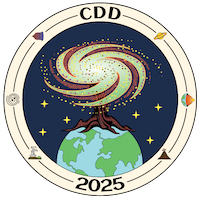Orateur
Description
With the return of lunar material from the Chang’E 5 and Chang’E 6 missions and the upcoming Mars Sample Return mission, developing optimized methodologies for analyzing rare and highly valuable samples of regolith is essential. These samples offer unique insights into the physical and geochemical evolution of planetary bodies. Among the tools available for studying these processes, natural radionuclides—such as uranium, thorium, potassium, and their decay products like radon (Rn-222) play a key role. Radon, in particular, is a sensitive tracer of volatile transport, outgassing events, and regolith dynamics on airless bodies such as the Moon and Mercury. It also informs us about thermophysical properties and geological histories, contributing to our understanding of planetary surface evolution.
To support this scientific effort, we have developed a high-sensitivity gamma-ray spectrometry methodology at the Laboratoire National Henri Becquerel (LNE-LNHB) tailored to the analysis of very low-mass extraterrestrial samples (~1 g). A custom gas-tight sample holder was designed to minimize gamma-ray self-attenuation in the low-energy range, preserve radon within the sample, and ensure inert conditions to avoid alteration of pristine material. The setup relies on a high-purity germanium detector equipped with an active anti-coincidence veto system, optimized to reduce background noise and improve detection limits, particularly for low-energy emissions such as the 46.54 keV line of Pb-210.
As a validation step, a Martian regolith analog (JSC Mars-1) was enclosed and measured immediately to minimize radon loss. The total acquisition time was 36.25 days, allowing for precise quantification of the natural gamma-emitting radionuclides. The measured specific activities were 65.0 ± 11.7 Bq/kg for U-238, 19.7 ± 7.5 Bq/kg for Ra-226, 13.6 ± 4.9 Bq/kg for Th-232, 1.12 ± 0.4 Bq/kg for U-235, and 146 ± 47 Bq/kg for K-40. A specific treatment was also applied to investigate the unsupported Pb-210 fraction, enabling future interpretations of radon emanation from planetary regoliths.
This methodology demonstrates the capability to perform radiological characterization of extraterrestrial materials using non-destructive techniques that require minimal sample mass while achieving high sensitivity. Beyond analytical performance, this approach contributes to the broader understanding of volatile dynamics, surface processes, and interior-surface interactions on planetary bodies. It offers a valuable tool for future exploration missions and provides a bridge between geochemistry, planetary science, and environmental physics, disciplines united by the need to decode the motion and evolution of a cosmos in constant change.
| Speaker information | PhD 2nd year |
|---|

